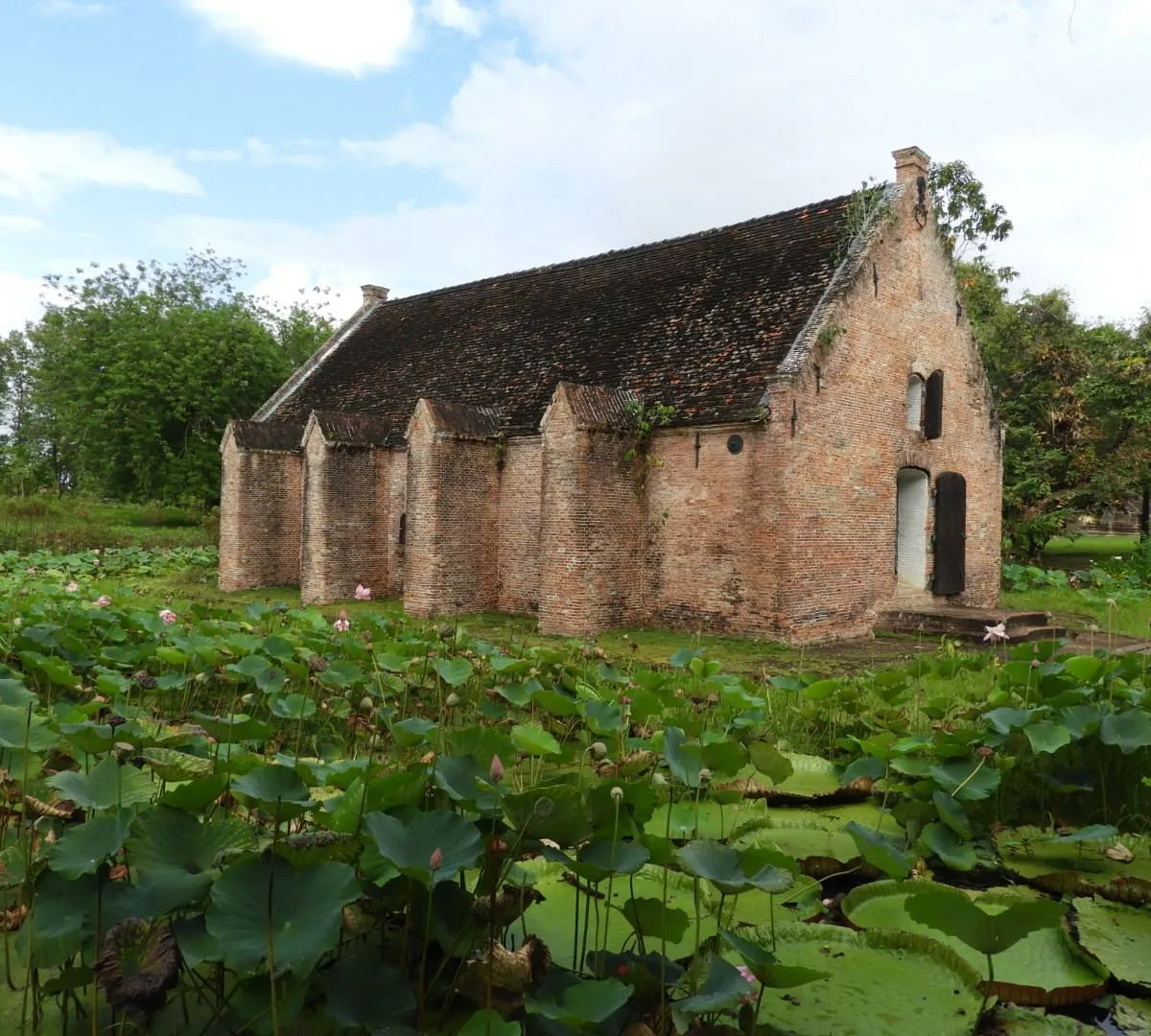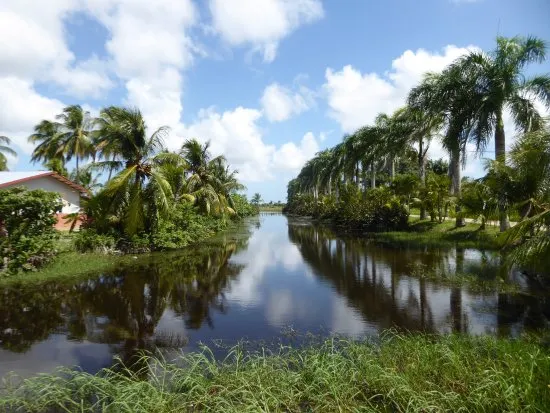1. Overview & Address of the Place
Paramaribo’s Historic Inner City is the heart of Suriname’s capital, Paramaribo, renowned for its preserved colonial architecture. The area features a harmonious mix of Dutch colonial buildings and local Caribbean influences, with notable wooden houses, churches, and government buildings. It was declared a UNESCO World Heritage Site in 2002 due to its historical and architectural significance.
Location – Google Maps link
2. History
- Founded in 1613: Paramaribo was established by the Dutch as a trading post in 1613, later becoming a key settlement in Suriname.
- Colonial Architecture: The Historic Inner City features well-preserved colonial wooden buildings and structures, adapting to the tropical climate.
- Grid Layout: Paramaribo’s streets were laid out in a grid pattern in 1683, which is unusual for South American cities.
- Dutch Influence: The area showcases Dutch colonial influence, particularly in its distinctive architecture, such as the wooden buildings with verandas.
- Economic Hub: The city was an important center of trade in sugar, coffee, and later, other commodities during the colonial era.
- Cultural Diversity: The city reflects a mix of indigenous, African, European, and Asian cultures, which shaped its history and architecture.
- Religious Sites: Numerous places of worship exist in the Historic Inner City, including mosques, synagogues, and churches.
- Abolition of Slavery: Paramaribo played a role in Suriname’s history, including the abolition of slavery in 1863.
- UNESCO World Heritage Site: In 2002, the Historic Inner City was designated as a UNESCO World Heritage Site for its unique cultural and architectural value.
- Preservation Efforts: Efforts are ongoing to preserve the city’s architecture and cultural landmarks despite environmental and political challenges.
3. What Makes Paramaribo Historic Inner City Popular?
Paramaribo’s Historic Inner City is popular for its unique and well-preserved colonial architecture, blending European, African, and indigenous influences. It is a living testament to the city’s history, showcasing vibrant street life, religious diversity, and the colonial legacy. The city’s wooden buildings and grid layout add to its charm and make it a favorite destination for cultural and historical tourism.
4. Overall Ratings (1 to 5 Stars)
Rating: ★★★★☆ (4/5)
Paramaribo’s Historic Inner City offers a rich historical and cultural experience, though some buildings may require restoration. It remains a must-visit destination for those interested in colonial history and architecture.
5. Weather
Paramaribo has a tropical rainforest climate, characterized by high humidity and warm temperatures year-round. The average temperature is around 30°C (86°F). The wet season runs from December to July, with the heaviest rainfall from April to July, making the drier months (August to November) more favorable for travel.
6. Nearest Five Hotels
- Royal Torarica
- Torarica Hotel
- Hotel Krasnapolsky
- Hotel Palacio
- Hotel Residencial
7. Timings
The Historic Inner City is accessible year-round, with the main attractions open daily. However, some museums and historic buildings may have specific visiting hours, typically from 9:00 AM to 5:00 PM. It’s advisable to check for the latest details before visiting.
8. Time Required to Visit
To fully explore Paramaribo’s Historic Inner City, including its colonial buildings and museums, visitors typically spend 2-3 hours walking around the area.
9. Entry Fees & Ticket Booking Details
There are no entry fees for the Historic Inner City itself. However, certain museums or attractions may charge a nominal fee for entry. Tickets can usually be purchased on-site or through local tour operators.
10. Things to See & Do
- Visit the Presidential Palace: Explore this neoclassical building, an important landmark in Paramaribo.
- Saint Peter and Paul Cathedral: A beautiful wooden cathedral, notable for its Gothic Revival architecture.
- Neveh Shalom Synagogue: One of the oldest synagogues in South America.
- Palmentuin (Garden of Palms): A peaceful park with a variety of palm trees, ideal for a leisurely stroll.
- Explore Local Markets: Visit the vibrant markets and shops, offering crafts, local produce, and souvenirs.
11. Best Time to Visit
The best time to visit Paramaribo’s Historic Inner City is during the drier months, from August to November, when the weather is cooler and more comfortable for outdoor exploration.
12. Nearest Parking Spots
Parking is available near key attractions in Paramaribo, particularly around the Presidential Palace and Saint Peter and Paul Cathedral. Visitors are encouraged to use public transportation or taxis for easier access.
13. Tips for Visitors
- Wear comfortable walking shoes, as you’ll be exploring narrow streets and cobblestone paths.
- Consider hiring a local guide to gain deeper insights into the history and architecture of the area.
- Respect local customs and the historical significance of religious and cultural sites.
14. How to Reach the Place
Paramaribo’s Historic Inner City is located in the heart of the capital and can be easily reached by taxi, bus, or on foot from most central hotels and attractions.
15. Nearby Attractions to Combine for the Visit
- Fort Zeelandia: A historic fort housing the Surinamese Museum, just a short walk from the Historic Inner City.
- Palmentuin (Garden of Palms): A tranquil park in the city center.
- Saint Peter and Paul Cathedral: A neoclassical cathedral worth visiting for its architecture.


